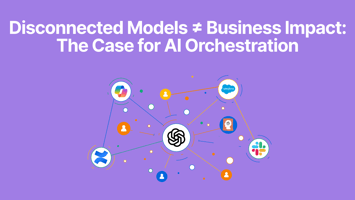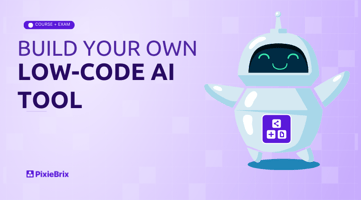Your AI Isn’t Failing - It’s Fragmented
AI Archetypes: Choosing the Right AI For Support

Why AI in Customer Support Needs a Clear Framework
If you’re evaluating AI for customer support in 2025, you’ve probably noticed two things:
- Every vendor claims to have the “best AI for support.”
- It’s almost impossible to compare tools on price or features alone.
That’s where a framework of AI archetypes comes in. Instead of looking at dozens of point solutions, you can step back and ask: What type of AI am I actually buying?
In our AI Buying Guide, we identify four common AI solution archetypes for customer service and support teams. Each has pros, cons, and the right fit depending on your goals.
The Four AI Archetypes for Customer Support
Add-On Approach
Examples: Salesforce Agentforce, Zendesk AI.
These are AI assistants that are tightly integrated into the customer service platforms you already use. If you’re heavily invested in Salesforce, Zendesk, or ServiceNow, add-ons can feel like the path of least resistance.
✅ Advantages:
- Seamless integration with your existing ticketing and CRM stack
- Vendor-managed updates and models
- Lower setup effort compared to greenfield solutions
❌ Challenges:
- Limited to what the platform offers; roadmap velocity depends on the vendor
- Lock-in risks - harder to change providers later
- May not support more technical or cross-platform use cases
For organizations that want to test the waters with AI in support, platform add-ons can be a safe first step. But they rarely give you full flexibility.
DIY Approach
Examples: Azure AI Services, AWS Bedrock, Google Cloud AI
Some technical organizations opt to build their own support AI ecosystem. This means using cloud AI services, LLM APIs, and custom integrations to create an in-house solution.
✅ Advantages:
- Maximum control and flexibility
- Ability to customize workflows for unique technical support needs
- Direct ownership of data security and governance
❌ Challenges:
- High setup and engineering cost
- Ongoing maintenance and retraining burden
- Risks distracting engineers from product development
DIY ecosystems can be powerful, but they’re best suited for companies with a mature engineering function and strong appetite for ongoing ownership.
White Glove Approach
Examples: Forethought, Glean, Ada
This is the “deflection-first” model: AI-powered chatbots or search engines sit in front of your agents, trying to answer FAQs and resolve tickets before they ever hit the queue.
✅ Advantages:
- Reduce ticket volume for repetitive, straightforward questions
- Improve self-service and knowledge base visibility
- Can cut handle time for common inquiries
❌ Challenges:
- Struggle with complex or technical issues
- Often frustrate customers if the AI “hallucinates” or doesn’t understand context
- Risk of over-promising - not all deflections are “successful”
Chatbots are valuable when your support load is dominated by FAQs. But if your tickets involve integrations, debugging, or product edge cases, you’ll need more than a bot.
Integrator Approach
Examples: PixieBrix
Copilot platforms are different: instead of replacing agents or focusing on deflection, they embed AI directly into the support workflow. A copilot surfaces relevant context, guides actions, and accelerates resolution - while the agent stays in control.
✅ Advantages:
- Works across multiple tools (CRM, Slack, Jira, email)
- Reduces context switching between platforms
- Helps frontline support handle more without escalating to engineering
- Boosts confidence by giving real-time suggestions and summaries
❌ Challenges:
- Requires upfront integration and onboarding
- Not a “plug-and-play” chatbot - teams must think through workflows
For technical SaaS, fintech, and health tech teams, copilots often deliver the strongest ROI: they empower agents while respecting the complexity of the work.
Why These Archetypes Matter
The archetypes aren’t about “winners” or “losers.” They’re about fit.
- If you’re a large enterprise heavily tied to Salesforce or Zendesk, add-ons may be the fastest way to start.
- If you’re a technically strong team with custom needs, DIY ecosystems can give you full control.
- If your volume is mostly repetitive, a chatbot or search-first approach can lower costs.
- If your work is technical, cross-platform, and human-intensive, a copilot platform provides leverage.
The key is to know what you’re actually buying. Too many companies are disappointed in AI not because they chose the wrong vendor, but because they chose the wrong type.
What Else You Should Know
- Deflection-first vs. agent-first: This is the critical dividing line. If your support is mostly technical, deflection-first AI will never deliver.
- Scalability is different by archetype: Chatbots may look cheap at first, but costs spike with poor deflection rates. Copilots require setup but scale predictably.
- Lock-in matters: Add-ons tie you to one vendor. DIY ties you to your engineering team. Copilots give more flexibility across tools.
Conclusion: Fit First, Features Second
AI in customer support is noisy, but archetypes cut through the hype. Start by deciding which type of AI aligns with your support goals, then compare vendors within that archetype.

